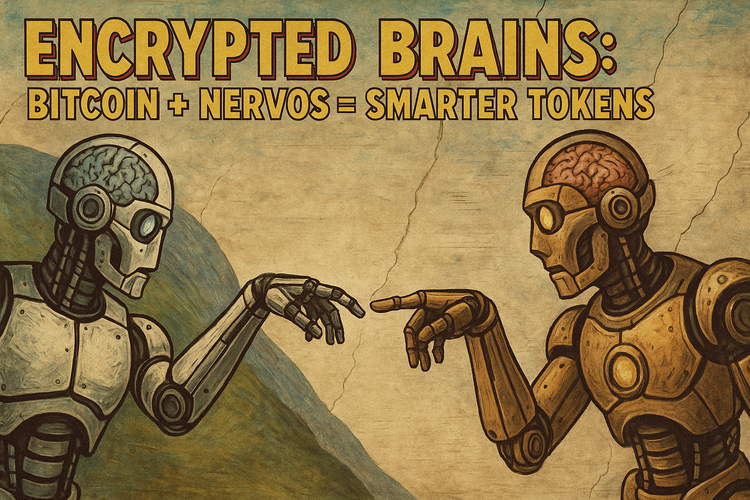Bitcoin vs. Quantum Computing: Is Your Crypto Safe?

Quantum computing is lurking in the shadows, flexing its futuristic muscles. Some say it could break Bitcoin’s encryption, turn wallets into playgrounds for hackers, and make BTC worthless. 😱 But is it all just sci-fi paranoia? Let’s dive in!
Bitcoin’s security is based on cryptography, but quantum computers play by a whole new set of rules. Are we heading for a digital disaster? Notoko’s got the answers. 🕵️♂️
Bitcoin’s Bits and Hashing: How It All Works (Kinda) 🔏
Bitcoin uses SHA-256 hashing to keep everything secure. Think of it as a digital fingerprint—unique, impossible to fake, and incredibly hard to reverse-engineer. 🧩
When you make a BTC transaction, it gets jumbled into a hash, forming a Merkle root that links to previous transactions. If an attacker wants to mess with Bitcoin, they’d have to recalculate hashes for the entire chain—a near-impossible task with today’s tech. 🚧
But what happens if quantum computers step into the ring? 🤔
Quantum Computing: The Qubit Revolution! 🤯
Forget binary—quantum computers use qubits that can be 0, 1, or both at the same time. It’s like flipping a coin that never lands. 🌀 This phenomenon, called superposition, allows quantum computers to solve problems way faster than classical ones.
Enter Shor’s Algorithm, a quantum superweapon that could theoretically crack all cryptography—including Bitcoin’s SHA-256. But here’s the catch…
The Quantum Catch: Decoherence and Error Correction 🛠️
Quantum computers are fragile. Their calculations collapse if they interact with the environment—a process called decoherence. Think of it as trying to take a photo of a ghost, but every time you do, it disappears. 👻📷
To actually break Bitcoin, quantum computers would need millions of qubits working in perfect harmony. IBM’s Quantum System Two is making progress, but we’re still a long way from real-world quantum attacks. 🏗️
Is Bitcoin Doomed? The Real Quantum Threat ⚠️
The numbers don’t lie:
- Breaking SHA-256 in one day? 13 million qubits needed. 💻
- Taking over Bitcoin’s network (51% attack)? 1 billion qubits required. 🚀
Yeah… we’re not there yet. But quantum computing is evolving, and Bitcoin wallets could be the first targets.
That’s why cryptographers are exploring Lamport Signatures (quantum-resistant keys) and Lattice-Based Cryptography (a super confusing but effective encryption method). The big question is: would Bitcoin need a hard fork to implement these changes? 😬
Bitcoin’s Quantum Defense: Staying One Step Ahead 🔐
Bitcoin’s strength isn’t just in its code—it’s in the people who believe in it. The moment a real quantum threat emerges, expect the Bitcoin community to react fast. 🏃♂️
Still, confidence is everything. If people panic, BTC’s price could plummet, miners could jump ship, and suddenly, Bitcoin’s security model isn’t looking so great.
The solution? Stay ahead of quantum computing. Keep innovating, keep adapting, and make sure BTC remains the king of crypto. 👑⚡
Final Verdict: Bitcoin is Safe… for Now 🔥
Quantum computing is cool, but it’s not ready to break Bitcoin—yet. The real challenge will come if and when quantum systems reach the power levels needed to crack cryptography.
Until then, the crypto world needs to keep building, innovating, and preparing. Bitcoin isn’t going down without a fight. 🥊

Disclaimer
*The information and analysis provided in this article are intended for educational and informational purposes only and should not be considered as financial, investment, or professional advice. While our team strives to ensure the accuracy and reliability of the content, we make no representations or warranties of any kind, express or implied, about the completeness, accuracy, reliability, suitability, or availability of the information presented.
The content within this article may include opinions and forward-looking statements that involve risks and uncertainties. The blockchain and cryptocurrency markets are highly volatile, and past performance is not indicative of future results. Any reliance you place on the information presented is strictly at your own risk. Before making any investment decisions, we highly recommend consulting with a qualified financial advisor or conducting your own thorough research.
By accessing and using the information provided in this article, you acknowledge and agree that neither the authors, publishers, nor any other party involved in the creation or delivery of the content shall be held liable for any direct, indirect, incidental, consequential, or punitive damages, including but not limited to loss of profits, goodwill, or data, arising out of your use or inability to use the information provided or any actions you take based on the information contained within this section.*





